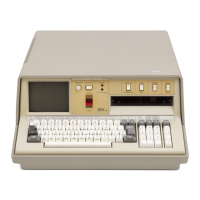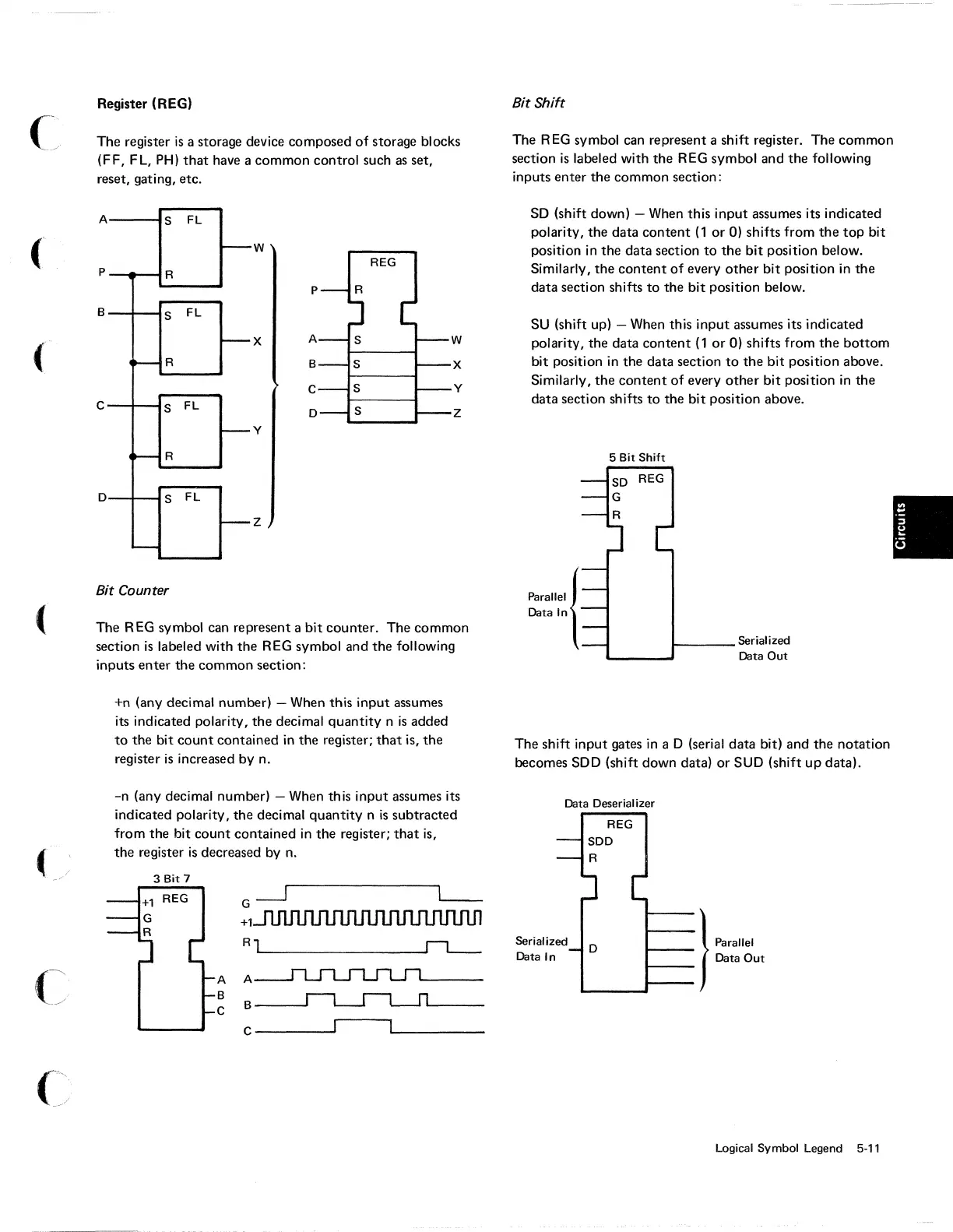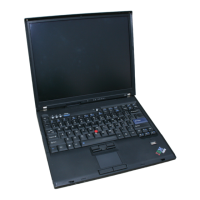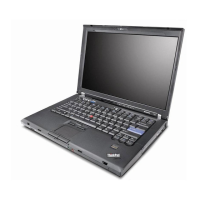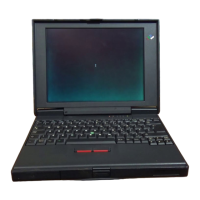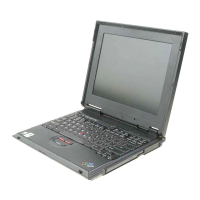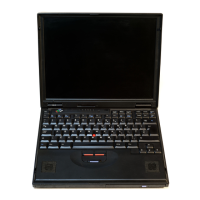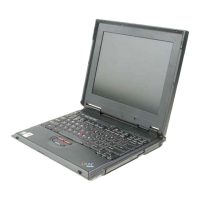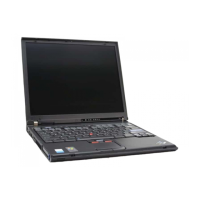(
(
(
(/
c
Register (REG)
The register
is
a storage device composed
of
storage blocks
(FF, FL,
PH)
that
have a common control such
as
set,
reset, gating, etc.
A
S
FL
~
W
REG
p
R
p
R
B
S
FL
-
X
A
S W
-
R
B
S
X
C
S
y
c
S
FL
0
S
Z
-
y
-
R
o
S
FL
I--
z
-
Bit
Counter
The REG symbol can represent a bit counter. The common
section
is
labeled with
the
REG symbol and
the
following
inputs enter the common section:
+n (any decimal number) - When this input assumes
its indicated polarity,
the
decimal
quantity
n
is
added
to
the bit
count
contained
in
the
register;
that
is,
the
register
is
increased by n.
-n
(any decimal number) - When this input assumes its
indicated polarity, the decimal quantity n
is
subtracted
from the bit
count
contained
in
the register;
that
is,
the register
is
decreased by
n.
3 Bit 7
+1
REG
G---l
L-
G
+1
R
Rl
II.-
A
A
B
C
B
C
Bit
Shift
The REG symbol can represent a shift register. The common
section
is
labeled with the REG symbol and
the
following
inputs enter the common section:
SO (shift down) - When this
input
assumes its indicated
polarity, the data
content
(1
or
0) shifts from
the
top
bit
position
in
the data section
to
the
bit position below.
Similarly,
the
content
of
every
other
bit position
in
the
data section shifts
to
the bit position below.
SU (shift up) - When this input assumes its indicated
polarity, the data
content
(1
or
0) shifts from
the
bottom
bit position
in
the data section
to
the
bit position above.
Similarly,
the
content
of
every
other
bit position
in
the
data section shifts
to
the
bit
position above.
Parallel {-
Data
In
5 Bit Shift
REG
/-
___
Serialized
Data
Out
The shift input gates
in
a D (serial data bit) and the notation
becomes SOD (shift down data)
or
SUD (shift
up
data).
Data Oeserializer
Serialized
Data In
REG
SOD
0
}
",,.Ii,1
Data
Out
Logical Symbol Legend 5-11
